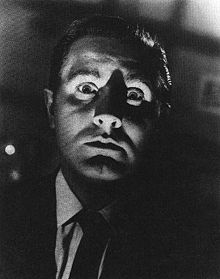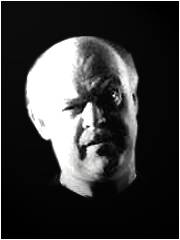General Info About Epic (Marvel) Comics:
Epic Comics (also known as the Epic Comics Group)[1] was a creator-owned imprint of Marvel Comics started in 1982, lasting through the mid-1990s, and being briefly revived on a small scale in the mid-2000s.
History
Origins
Launched by editor-in-chief Jim Shooter as a spin-off of the successful Epic Illustrated magazine, the Epic imprint allowed creators to retain control and ownership of their properties. Co-edited by Al Milgrom and Archie Goodwin, the imprint also allowed Marvel to publish more objectional content (sometimes explicit) without needing to comply with the stringent Comics Code Authority. Epic titles were printed on higher quality paper than typical Marvel comics, and were only available via the direct market.[1]
The first project was Dreadstar, a space opera by writer-artist Jim Starlin, published November 1982. Dreadstar had first appeared in the Epic Illustrated magazine in issue #3. Subsequent titles included Coyote by Steve Englehart; Alien Legion (a war series set in outer space, created by Carl Potts but written by others); Starstruck, a satirical space opera farce about female freedom fighters by Elaine Lee and Michael Wm. Kaluta; Six from Sirius, a sci-fi title by writer Doug Moench and artist Paul Gulacy; Sisterhood of Steel, a saga of elite women-warriors by Christy Marx and Mike Vosburg; and Void Indigo, a controversial title written by Steve Gerber.
The line branched out later with historical fiction (Black Dragon), social commentary (The One, Marshal Law), humor (Groo) and fantasy (Moonshadow, Elfquest). However, initial sales were disappointing, so in order to give the line a boost, popular Marvel writer-artist Frank Miller and artist Bill Sienkiewicz were commissioned to develop Elektra: Assassin, featuring the ninja assassin from the Daredevil comic book.
Although Epic was meant to be mainly a creator-owned line, Elektra: Assassin became only the first title featuring Marvel characters published by the imprint. Others included Meltdown, a painted mini-series featuring Havok and Wolverine from the X-Men; Iron Man: Crash; a resurrected Tomb of Dracula; and the miniseries Silver Surfer: Parable, dealing with messianic themes, written by Stan Lee with art by French comics storyteller Mœbius). Marvel then commissioned writer and Marvel editor Archie Goodwin to create original characters for a Mature Readers superhero line for Epic Comics. This took the form of The Shadowline Saga, a storyline spanning four different titles in 1987.
Epic was also notable as one of the first American comic publishers to release material originally produced in other countries, such as the Moebius graphic novels Airtight Garage, The Incal and Blueberry, published here in English translations by Jean-Marc Lofficier & Randy Lofficier. Epic also published Katsuhiro Otomo's manga classic Akira, with translations by Marvel staffer Mary Jo Duffy and colors by Steve Oliff.
As well, Epic, now edited by Potts, licensed a variety of literary material, the best known of which were the Clive Barker novels and stories, including Hellraiser, Nightbreed and Weaveworld. Other adapted works included William Shatner's Tekworld, the Wild Cards anthologies, and William Gibson's Neuromancer.
1990s
During this decade, Epic published the four-part miniseries Atomic Age, a 1950s-style science fiction story reimagined from a contemporary perspective by writer Frank Lovece and artists Mike Okamoto and Al Williamson, the latter two of whom won the Russ Manning Award and an Eisner Award, respectively, for their work there, and brought out the action-oriented Heavy Hitters line with material from Peter David (Sachs and Violens), Howard Chaykin (Midnight Men), Gerard Jones (The Trouble with Girls), Joe Kubert (Abraham Stone), Ron Lim (Dragon Lines), and Steve Purcell (Sam & Max). A subsequent comic-book sales bust, however, prompted Marvel to end Epic in 1994.[citation needed] In late 1995, the line was temporarily brought back to complete the reprinting of the Akira manga. Epic was ended again when that series was completed in early 1996.
2000s resurrection
In 2003, the Epic imprint was brought back, with two stated goals: to scout for new creator-owned projects, and to offer new talent a chance to work on lesser-known Marvel properties.[citation needed] Marvel editors contacted industry columnists, such as Cleveland Plain Dealer and Newsarama columnist Michael San Giacomo, Ryan Scott Ottney, Eric J. Moreels, and Sword of Dracula creator Jason Henderson, to ask for new comic pitches using existing Marvel properties.[citation needed] San Giacomo created his own character, Phantom Jack. Henderson created "Strange Magic", a story about a hitherto-unknown daughter of Marvel's Doctor Strange.[citation needed] An open call for submissions was issued, which prompted a huge response, and resulted in months-long delays in reviewing submissions.[citation needed] The option of submitting creator-owned pitches was quickly downplayed and then discontinued.[citation needed]
The new Epic received considerable attention with Trouble, a miniseries by Mark Millar that supposedly would retcon the Spider-Man mythos by revealing details from the teenage years of May Parker and Peter's mother, but although all the main characters sported names any Spider-Man fan would recognize, there was no explicit revelation that they were in any way connected to their Marvel Universe namesakes. Other comics in the line, including a Crimson Dynamo title, were produced by lesser-known talents, and the line was cancelled. A number of solicitations also were cancelled.[citation needed] Titles that were in progress when Marvel's new management ended the line were consolidated under one cover with the title Epic Anthology Presents, which was cancelled after the first issue. San Giacomo requested that the rights to Phantom Jack be returned to him, and it was not included in the anthology.[citation needed] The story was published instead by Image Comics and returned in 2007 through Atomic Pop Art Enterprises.
Titles
- 67 Seconds - written by James Robinson, art by Steve Yeowell
- A1
- Akira - Manga - Katsuhiro Otomo
- Alien Legion - created by Carl Potts
- Atomic Age - created by Frank Lovece and Mike Okamoto
- Black Dragon - written by Chris Claremont, art by John Bolton
- Blood: A Tale - created by J.M. DeMatteis
- The Bozz Chronicles - written by David Michelinie, art by Bret Blevins
- Cadillacs and Dinosaurs
- Captain Confederacy
- Car Warriors, based on Steve Jackson Games' Car Wars
- Clive Barker-related
- Clive Barker's Book of the Damned
- Clive Barker's The Harrowers
- Clive Barker's Hellraiser - based on concepts by Clive Barker, includes a separate outing for Pinhead
- Clive Barker's Nightbreed - based on
Clive Barker's novel and movie by the same name.
- Nightbeed / Hellraiser: Jihad
- Pinhead, based on the works of Clive Barker
- Pinhead vs. Marshal Law
- Weaveworld, based on the works of Clive Barker
- Coyote - created by Steve Englehart and Steve Leialoha
- Crash Ryan
- Crimson Dynamo
- Dreadstar - created by Jim Starlin
- Elektra: Assassin by Frank Miller and Bill Sienkiewicz
- Elektra Lives Again by Frank Miller
- ElfQuest - Wendy and Richard Pini
- Epic Anthology - collected the complete first issues of three different titles that were developed as individual mini-series (Sleepwalker, Young Ancient One and Strange Magic); only one issue published
- Epic Illustrated - magazine anthology similar to Heavy Metal
- Fafhrd and the Gray Mouser
- Feud, Written by Mike Baron with art by Mark A. Nelson - (1993).
- Groo the Wanderer - by Sergio Aragonés, Mark Evanier and Stan Sakai
- Gun Theory - by Daniel Way and Jon Proctor, cancelled mid-series after two issues
- Lawdog - from the Epic Heavy Hitters line, 1993.
- The Last American
- The Light and Darkness War
- Marshal Law
- Meltdown - written by Walt Simonson and Louise Simonson; art by Jon J Muth and Kent Williams
- Metropol - by Ted McKeever
- Moebius a series of
self-titled graphic novels by Moebius. Some characters in these also received
their own titles:
- Airtight Garage - French comic, created by Moebius
- The Elsewhere Prince - part of the Airtight Garage universe
- Onyx Overlord - part of the Airtight Garage universe
- Blueberry
- Lieutenant Blueberry
- Marshal Blueberry
- Chaos
- The Incal
- Metallic Memories
- Moonshadow - created by J.M. DeMatteis
- The Olympians - Stephen Jewell and Gary Chaloner
- The One - Rick Veitch
- Psychonauts - Alan Grant and Motofumi Kobayashi
- Plastic Forks - Ted McKeever
- Sachs and Violens - Peter David and George Pérez
- Sam & Max (Freelance Police and Bad Day on the Moon)
- Samurai Cat
- The Shadowline Saga - created by Archie Goodwin
- Silver Surfer: Parable - Stan Lee and Moebius
- Sisterhood of Steel
- Six from Sirius - Doug Moench and Paul Gulacy
- The Sleeze Brothers
- Someplace Strange
- Spyke
- Stalkers
- The Stars My Destination
- Starstruck - written by Elaine Lee, art by Michael William Kaluta
- Steelgrip Starkey - miniseries - Alan Weiss
- Stray Toasters — Bill Sienkiewicz
- Swords of the Swashbucklers - written by Bill Mantlo, art by Jackson Guice
- William Shatner's Tek World
- Timespirits
- Tomb of Dracula - revival by Marv Wolfman and Gene Colan
- Tomorrow Knights - Created by Roy Richardson and Rod Whigham
- The Transmutation of Ike Garuda - written by Elaine Lee, art by James Sherman
- Trouble
- The Trouble with Girls
- Video Jack - written by Cary Bates, art by Keith Giffen
- Void Indigo
- War Man - written by Chuck Dixon, art by Juan Zanotto (2 parts; 1993)
- Wild Cards
All Extracts Taken From: http://en.wikipedia.org/wiki/Epic_Comics


.jpg)
+001.jpg)
.jpg)
.jpg)
.jpg)
.jpg)


.bmp)

+001.jpg)
+001.jpg)


.bmp)
+001.jpg)
+001.jpg)

+001.jpg)
+001.jpg)
+001.jpg)
+001.jpg)
+001.jpg)
+001.jpg)

+001.jpg)
+001.jpg)
+001.jpg)
